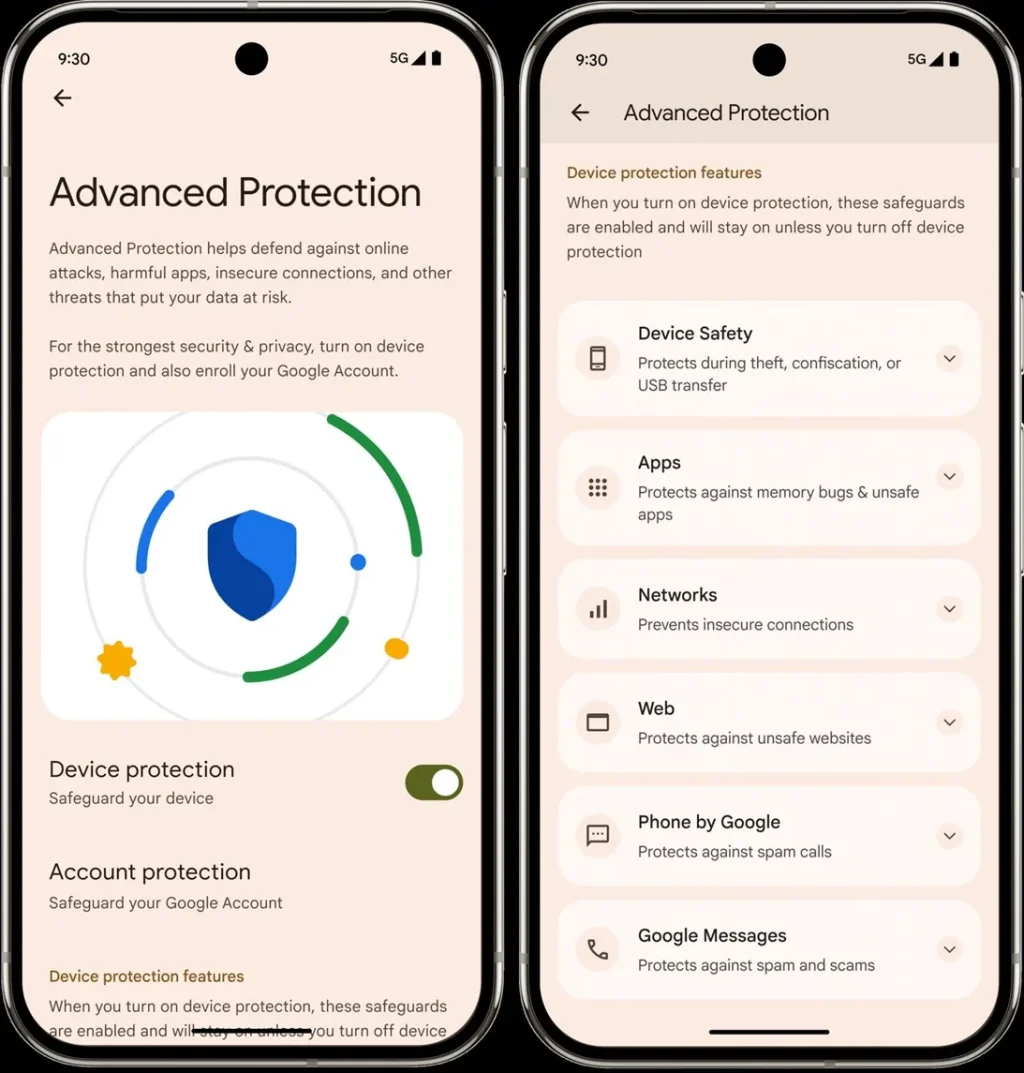
Google has announced a sweeping enhancement of Android 16’s security architecture, designed to combat spyware and sophisticated threats, including zero-day exploits. Unlike earlier iterations that primarily focused on safeguarding Google accounts, the new protections now operate at the system level, extending deep into the device itself.
Android has long remained a favored target for malicious campaigns, including those leveraging digital forensics tools. In response, Google is expanding its Advanced Protection Program—originally intended for high-risk individuals such as journalists, politicians, and human rights advocates—by embedding its capabilities directly into the operating system.
The reimagined Advanced Protection in Android 16 is no longer confined to app-level settings. It now manifests as a centralized, device-wide security layer that enforces the strictest system safeguards and prevents the accidental or intentional disabling of critical features. This approach is akin to Apple’s “Lockdown Mode” in iOS.
Under Advanced Protection, mechanisms such as verified boot, runtime integrity monitoring, rigorous app and USB port isolation, and automatic reboot after 72 hours of inactivity are activated. Enhanced app vetting through Google Play Protect is also enabled by default.
Additional features—previously unavailable—are now included: an intrusion log and protection against reconnection to insecure networks. The intrusion log is stored in encrypted cloud storage and is intended to capture signs of breach attempts; only the device owner has access. The network protection feature targets public Wi-Fi environments lacking modern encryption, reducing the risk of covert surveillance.
Advanced Protection also enforces secure defaults across both Google’s system apps—Chrome, Messages, Phone—and compatible third-party applications. However, some features may be hardware-dependent and will roll out gradually across supported models.
Beyond Advanced Protection, Android 16 introduces several tools aimed at preventing fraud and malicious activity. Among them is call-based scam protection: when receiving a call from an unknown number, the system automatically blocks suspicious behaviors such as sideloading apps, granting dangerous permissions, or disabling security features.
The Messages app is gaining a Key Verifier mechanism that uses public-key cryptography to authenticate contacts. Verification is completed via QR code scanning or number comparison, shielding users from message spoofing and SIM-swapping attacks.
The Scam Detection system has also been upgraded. It now employs AI to analyze incoming messages for fraud, detecting scams involving toll payments, gift cards, fake tech support, cryptocurrency schemes, and other common tactics.
Significant changes have been made to Android’s device-tracking capabilities as well. The traditional Find My Device feature evolves into Find Hub, which can now locate not only phones but also other lost items using Bluetooth tags, with support from airline partners. Later in 2025, Find Hub will incorporate satellite connectivity and allow contact with trusted individuals even in the absence of mobile reception.
These security and privacy enhancements in Android 16 were unveiled during “The Android Show: I/O Edition” and will roll out to supported devices later this year.


